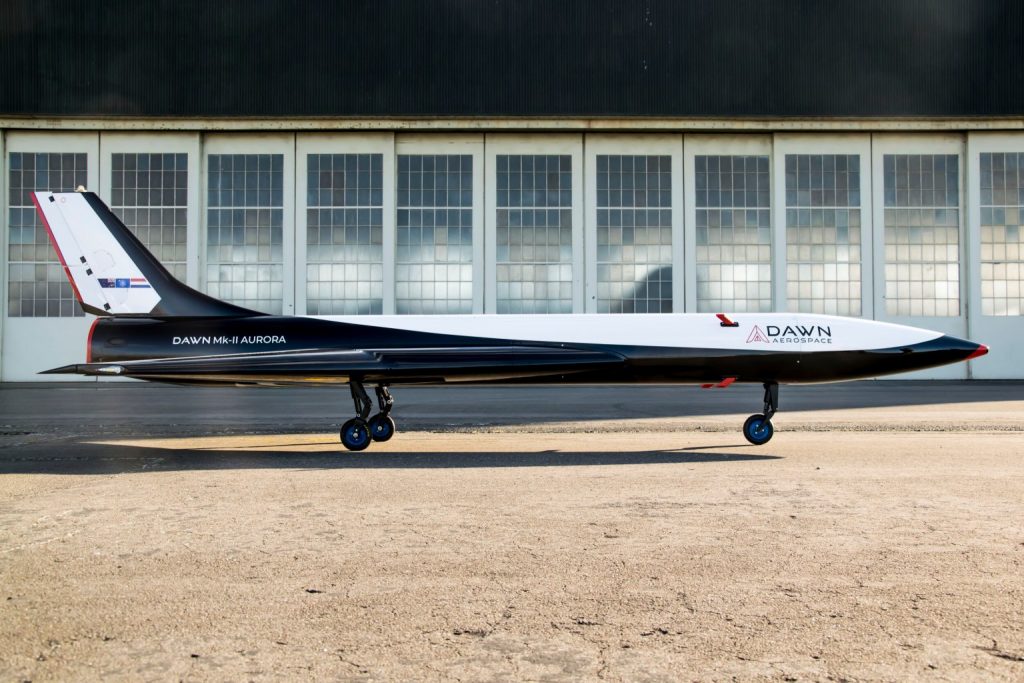The Dawn MK-II Aurora spacecraft is designed to take off like a normal plane, launch a payload into space and then land again. A twelve-month test phase will start at the end of 2020.
New space company Dawn Aerospace recently launched the small spacecraft Dawn Mk-II Aurora. The company founded in Delft (Netherlands) with close contacts to Delft University of Technology (TU Delft) operates like Rocket Lab from New Zealand. Visually, the Dawn Mk-II Aurora is reminiscent of the Concorde supersonic aircraft and not of a classic rocket. Nevertheless, the 4.80 meter long aircraft is to be used to carry a payload of up to 4 kilograms to a height of 100 kilometers, i.e. to the lower limit of space . The spacecraft is powered by a single engine in the rear.
As Dawn Aerospace explains, the Dawn Mk-II Aurora spacecraft combines the world of missiles with traditional aviation. In concrete terms, this means that the Dawn Mk-II Aurora can take off and land like a conventional airplane and still reach space. Then it can be refueled on the ground and carry the payload again. In a press release , the developers state that it is “the first spacecraft that will be able to do this several times in a day.”
Scientific use from 2021
According to Dawn Aerospace, a twelve-month test phase of the spacecraft should begin at the end of 2020. The Oamaru airport on the South Island is to be used for this. According to company information, Dawn Aerospace is still in negotiations with other New Zealand airports. Scientific use of the Dawn Mk-II Aurora aircraft is scheduled to begin in 2021.

The spacecraft will then be used for commercial transportation, for example of small satellites . According to Stefan Powell, chief technology officer of Dawn Aerospace, “Dawn Mk-II Aurora represents a major advance in space transportation.” According to Powell, a fleet of vehicles can make rocket factories superfluous, deliver cargo to space every day, and avoid having the oceans with it Missile debris become dirty.































Discussion about this post